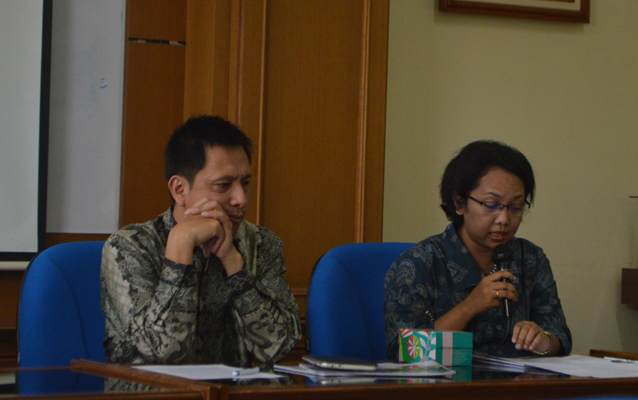
Rural development is one of priorities for government to do as expressed in the Nawa Cita programme. To draft a policy towards that goal, regional mapping is one aspect that needs to be done. But not all regions in Indonesia have been well mapped.
“Previous mappings are not in uniform in terms of scale or method. Therefore, a standard in procedure and prototype of rural areas is required for the whole,” said Head of Geospatial Information, Dr. Priyadi Kardono, M.Sc., in a national seminar titled Rural Areas Mapping to Accelerate Rural Development on Wednesday (24/2) in the University Club UGM.
The seminar organised by the Geospatial Information in the Home Affairs Ministry, National Development Planning Ministry/Bappenas, Rural Areas and Transmigration Ministry, as well as Faculty of Geography UGM is attended by shareholders in national geospatial information coming from several ministries, universities, professional association, private companies, local government and community. This is a continuation to the launching of rural areas maps on 16 February in Jakarta.
Professor from Faculty of Geografy UGM, Prof. Dr. Aris Marfa’i, told the importance of mapping to accelerate rural development, remembering more than half of villages in Indonesia are still underdeveloped. He pointed the needs for such maps: to know the village position in their surrounding areas, to know the potential of village, to resolve border conflict, inventory of village asset and management of Village Enterprises, to help development planning for village infrastructure as well as to give basic info for spatial integration of regional development.
This breakthrough is appreciated and supported by Rector of UGM, Prof. Ir. Dwikorita Karnawati, M.Sc., Ph.D. “This measure is important and needs to be implemented soon. But the next question is, how the map can be used by village chiefs and how it is updated in line with fast developments. This should be a homework for us all,” she said.
Minister for Rural Development, Underdeveloped Regions, and Transmigration, Marwan Jafar, mentioned the need for participation of rural communities as major actors in their rural development programme. “Law No. 6 Year 2014 on Rural Areas stipulates that villages are given authority, not an object but subject of development. The approach would be bottom-up, participatory, so they have the authority to regulate themselves, be a self-governing community, collaborating with their supervisors,” he said.
Such rural mapping will contribute to policy making important for society in line with the spirit to developing Indonesia right from the outer margin. He then encouraged universities, particularly Faculty of Geography, to be the motor for rural development through their researches. “I hope universities can give important and strategic recommendations on what is needed by society presently and in the future,” he said.

